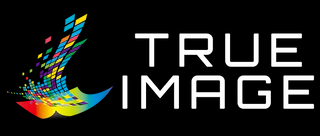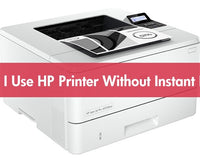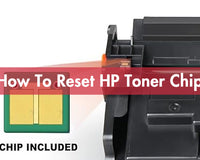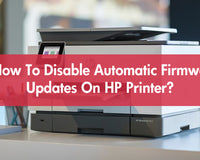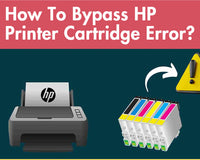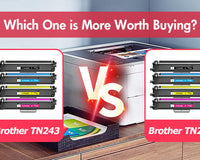Have you ever wondered how the banking system keeps up with millions of checks zipping through its veins daily? The answer lies in an often-overlooked key player: MICR check printing. Short for Magnetic Ink Character Recognition, this technology uses specialized MICR ink to ensure each cheque is readable, secure, and fraud-resistant. While we’re hurtling towards a cashless society, MICR check printing remains indispensable for transactions that demand the highest level of accuracy and security. So, what exactly is MICR check printing, and is MICR ink still a must-have in 2024? Let’s lift the veil and uncover the truth behind it.
Content:
I. What is MICR Check Printing?
- The Foundation of MICR Check Printing
- How does MICR Check Printing Work?
- The Unique Benefits of MICR Check Printing
- Is MICR Technology Limited to Banking?
- Why You Should Care about MICR Ink?
II. Why is MICR Ink Still Required in 2024?
- Security that Stands the Test of Time
- Compliance with Industry Standards
- Redundancy in the Digital Age
- The Cost of Non-MICR Alternatives
- A Blend of Tradition and Necessity
III. Steps to Print Checks with MICR Technology
IV. Frequently Asked Questions about MICR Check Printing
- Q: Do I always Need MICR Ink for Check Printing?
- Q: Can Any Printer be Used for MICR Check Printing?
- Q: Is MICR Ink Expensive?
V. Save on Printing Costs with True Image
I. What is MICR Check Printing?
MICR technology plays a crucial role in modern banking, ensuring that cheque processing remains secure and efficient despite advances in digital payment methods. But what exactly does MICR involve, and why is it still relevant today?
1. The Foundation of MICR Check Printing
To put it simply, MICR (Magnetic Ink Character Recognition) check printing is the backbone of secure and efficient cheque processing. It involves printing specific characters (think those blocky numbers at the bottom of your cheques) using MICR magnetic ink or toner. These characters can be scanned magnetically, making them both machine-readable and difficult to forge.
The key to its functionality lies in the magnetic ink MICR technology. Unlike regular ink, MICR ink contains magnetisable particles, allowing the printed data to be read even if the cheque is smudged or damaged. This gives financial institutions a robust and reliable way to process payments without manual intervention. Watch the video below to learn more about magnetic inks:
2. How does MICR Check Printing Work?
Imagine depositing a cheque. At the bank, high-speed MICR readers scan the bottom line of the cheque, which contains account numbers and routing details. Thanks to the unique properties of magnetic toner, the machine identifies and verifies these details quickly and with pinpoint accuracy.
Two core components make this possible:
- Magnetic Ink or MICR Toner: Specialised ink magnet or toner ensures the text is magnetically scannable.
- MICR Font: Fonts like E-13B and CMC-7 are standardised worldwide for their compatibility with MICR technology.

These elements combine to prevent errors, streamline operations, and maintain security—a winning formula for banks. Want to see the check scanning process? Check out this video:
3. The Unique Benefits of MICR Check Printing
What sets MICR check printing apart? Here are three compelling reasons why it’s still the gold standard:
- Fraud Prevention: The magnetisable properties of MICR magnetic ink make it nearly impossible for counterfeiters to replicate authentic cheques.
- Efficiency: With MICR, cheques are processed faster and more accurately, keeping queues shorter and operations smoother.
- Compatibility: MICR technology works universally, ensuring that cheques can be processed anywhere.
4. Is MICR Technology Limited to Banking?
Surprisingly, no. While financial institutions remain the primary users, MICR check printing also finds applications in payroll systems and government operations. For instance, businesses issuing payroll cheques often rely on magnetic toner to ensure secure, compliant printing.
5. Why You Should Care about MICR Ink?
Even in 2024, MICR check printing stands as a bulwark against forgery and inefficiency. While digital payments are gaining ground, cheques continue to play a critical role in industries that prioritise security and accuracy. Understanding this process doesn’t just make you a more informed consumer—it also helps you make smarter choices about your printing needs.
II. Why is MICR Ink Still Required in 2024?
In an age dominated by digital transactions and tap-to-pay convenience, you might assume that MICR check printing and MICR ink are relics of the past. But think again! Despite rapid technological advancements, MICR magnetic ink remains a critical element in secure financial operations, proving that some “old-school” methods still have their place in our modern world.
1. Security that Stands the Test of Time
At its core, MICR check printing excels where digital systems sometimes falter—security. Cheques printed with MICR magnetic ink or toner include magnetic data that is virtually impossible to replicate without specialised equipment. Unlike digital transfers, which are prone to hacking or phishing, MICR ensures that printed checks are tamper-proof and verifiable. For businesses handling sensitive payments or payroll, this peace of mind is invaluable. Here's an example of how MICR checks prevent check fraud:
2. Compliance with Industry Standards
Many financial institutions and government agencies mandate the use of MICR ink for check printing, and for good reason. MICR technology adheres to strict industry standards, ensuring that cheques can be processed anywhere with complete accuracy.
Tips: Even though many European banks now use optical check scanners, MICR ink remains the most reliable option for security. While optical scanners can read MICR font, using magnetic ink ensures a higher level of fraud protection, making it the most secure choice for check printing.
3. Redundancy in the Digital Age
While online banking and digital payment systems dominate, outages and cyberattacks can still disrupt these platforms. MICR check printing serves as a fail-safe in such scenarios. In critical sectors like payroll, insurance, or healthcare, having a physical backup ensures operations continue smoothly even if digital systems are compromised.
4. The Cost of Non-MICR Alternatives
Why not just use standard ink? The answer is efficiency. Using MICR ink ensures that your cheques are processed quickly and accurately by banking systems. Cheques printed without MICR ink often require manual intervention, leading to delays and increased costs. This makes MICR ink a long-term investment for businesses that rely on high-volume cheque transactions.
5. A Blend of Tradition and Necessity
Ultimately, MICR ink isn’t just a holdover from the past—it’s a bridge between tried-and-true methods and evolving financial needs. Whether you’re a business owner printing payroll cheques or a bank safeguarding transactions, MICR check printing continues to be an essential tool in 2024 and beyond.

III. Steps to Print Checks with MICR Technology
Printing checks with MICR technology may sound daunting, but it’s simpler than you think—provided you have the right tools and a clear plan. Whether you’re a small business owner or part of a larger organisation, following these steps will ensure your checks are secure, compliant, and ready for bank processing.
Step 1: Gather the Essentials
Before starting, make sure you have the following:
- MICR Ink or Toner: Choose high-quality MICR magnetic ink or toner compatible with your printer. This is crucial for ensuring your checks can be scanned and processed accurately.
- Compatible Printer: Many laser printers support MICR toner, while inkjet printers may require MICR magnetic ink. Verify your printer’s specifications to avoid any hiccups.
- Check Paper: Use specialised check stock paper with built-in security features such as watermarks or microprinting. This adds an extra layer of fraud protection.
Step 2: Install the MICR Ink or Toner
Switching to MICR-compatible printing requires replacing your standard ink or toner with MICR products. Carefully install the MICR ink cartridge or toner following your printer’s user manual. Ensure the alignment is perfect to avoid printing errors.
Step 3: Use Check Printing Software
A reliable check printing software simplifies the entire process. These tools provide templates that meet banking standards, ensuring that routing numbers, account details, and cheque design adhere to compliance requirements. Input your details accurately to avoid costly mistakes.
Step 4: Test Your Setup
Print a sample check to verify everything is working as expected. Check for:
- Legible Magnetic Characters: Ensure the MICR line (numbers at the bottom) is clear and properly aligned.
- Security Features: Confirm the paper’s anti-fraud elements are intact.
- Bank Compatibility: Some banks may offer verification services to ensure your MICR checks meet their standards.

Step 5: Print and Securely Store Checks
Once you’re satisfied with your setup, print your checks as needed. Store both printed checks and unused check stock in a secure location to prevent theft or misuse.
Pro Tip: To keep your system running smoothly, clean your printer periodically and replace MICR ink or toner as needed. Proper maintenance ensures consistent quality and extends the life of your equipment.
IV. Frequently Asked Questions about MICR Check Printing
When it comes to MICR check printing, many users have questions about its necessity, functionality, and maintenance. Let’s address some of the most common queries to help you navigate this essential technology.
Q: Do I always Need MICR Ink for Check Printing?
Yes, if you’re printing checks for bank use. MICR ink or toner ensures that the magnetic characters are machine-readable. Without it, checks may be rejected or processed manually, leading to delays. However, for internal or non-banking purposes, standard ink may suffice.
Q: Can Any Printer be Used for MICR Check Printing?
Not all printers support MICR technology. Laser printers are the most common choice for MICR toner, while specific inkjet printers can handle MICR magnetic ink. Always confirm your printer’s compatibility before purchasing supplies.
Q: Is MICR Ink Expensive?
MICR ink and toner are typically more expensive than standard options due to their specialised formulation. However, they’re essential for secure financial transactions. For general printing needs, consider switching to cost-effective alternatives like True Image toner cartridges to save on expenses.
V. Save on Printing Costs with True Image
MICR check printing is indispensable for secure, bank-compliant financial transactions. From understanding how MICR ink works to mastering the steps for seamless check printing, we’ve covered the essentials to help you stay ahead in 2024. But while MICR ink or toner is crucial for checks, it isn’t the most cost-effective option for everyday printing.
That’s where True Image comes in. Our premium HP toner and Canon ink cartridges offer high-quality, reliable performance for all your non-MICR printing needs—at a fraction of the cost. Whether it’s printing invoices, reports, or everyday documents, you can save significantly without compromising on quality.
Why overpay for specialised ink when it’s not necessary? By reserving MICR ink for checks and switching to True Image for everything else, you can optimise your printing expenses and still enjoy exceptional results. Upgrade your printing game today with True Image—your smart, affordable choice.
More Blogs:
What Is Digital Printing? How Does It Work?
